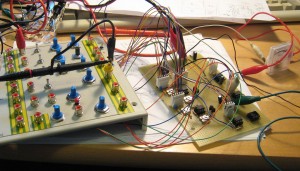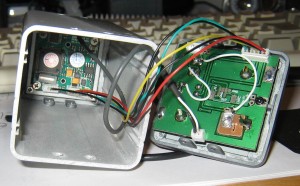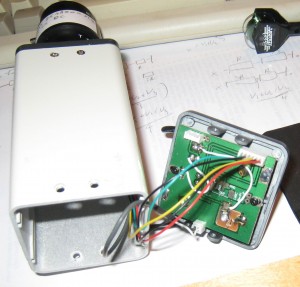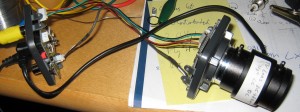-
Videobending Utility Functions
Posted on March 22nd, 2010 No commentsI’ve used the spare half of the Down The Bar case to house some utility functions that are useful for getting effects on video bends.
The functions are:
- Two voltage controlled amplifiers based on this design
- Sum/difference amplifier for the output of the two VCAs
- Schmitt trigger with controllable threshold and hysteresis
- Analog meters to show the DC level and AC level of the output from the sum/difference amp
Two 555-based LFOs
With all this to hand the you can create a lot richer effects, and the LFOs allow some “hands free” dynamic effects.
-
Inside a security camera (mostly air)
Posted on March 22nd, 2010 No commentsFor the video bending project I’ve been using a couple of CCD-based security cameras off eBay. They come in nice metal cases and have great performance in low light. The low resolution of the sensor rather spoils the picture quality though, but that’s not much of an issue once you start adding circuit bent mixers.
After a recent gig I noticed that the BNC socket on the back of one of the cameras had been damaged. As I prefer to use phono sockets I decided to take the damaged BNC off and replace it.
So, what’s inside these security cameras? The answer is “mostly air”. There are two little boards at each end and then a long camera body to make it look more substantial.
Just to show how little there is there – here is the whole camera working without its case. Moral of the story – don’t assume that bigger is better!
Another interesting thing I learnt about these cameras is how the iris control on the lens works. It turns out there are only two iris settings – if you set the switch on the back to “indoor” mode then the iris is fully open. If you set it to “outdoor” then the iris is fully closed.





